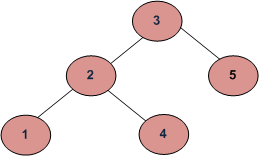Given a sorted array and a value k, write a program to find whether that number is present in that array or not.
The first solution that comes to the mind for this problem is to traverse through the entire array and find whether it is having the value k and return true or false. This takes O(n) running time. But then, we are presented with a hint that the input array is sorted (lets assume in ascending order). This problem can be attacked by doing a divide and rule analysis.
This can be done recursively. See whether k is inbetween the last and first element in the array. If it is, then divide the array into two and repeat the same. If its not, simply return false. Yes, its as simple as that. Following is the java code for the same.
The first solution that comes to the mind for this problem is to traverse through the entire array and find whether it is having the value k and return true or false. This takes O(n) running time. But then, we are presented with a hint that the input array is sorted (lets assume in ascending order). This problem can be attacked by doing a divide and rule analysis.
This can be done recursively. See whether k is inbetween the last and first element in the array. If it is, then divide the array into two and repeat the same. If its not, simply return false. Yes, its as simple as that. Following is the java code for the same.
Leave some comments if you have anything to say.
Cheers!
Braga






